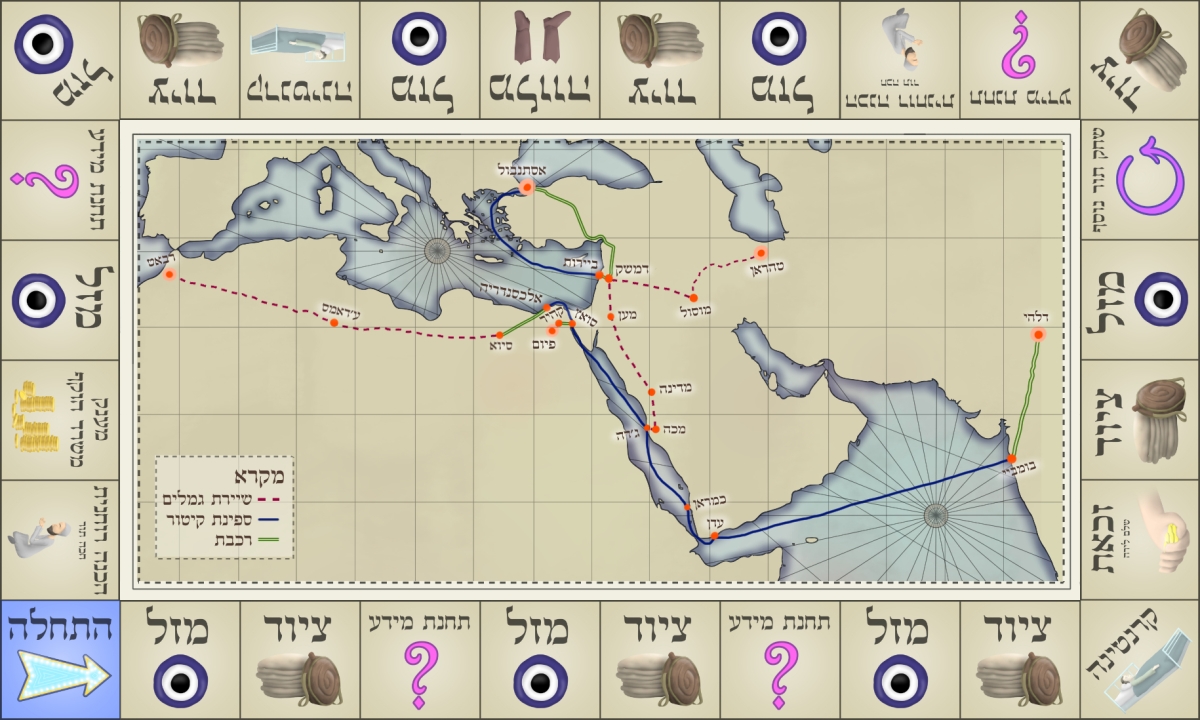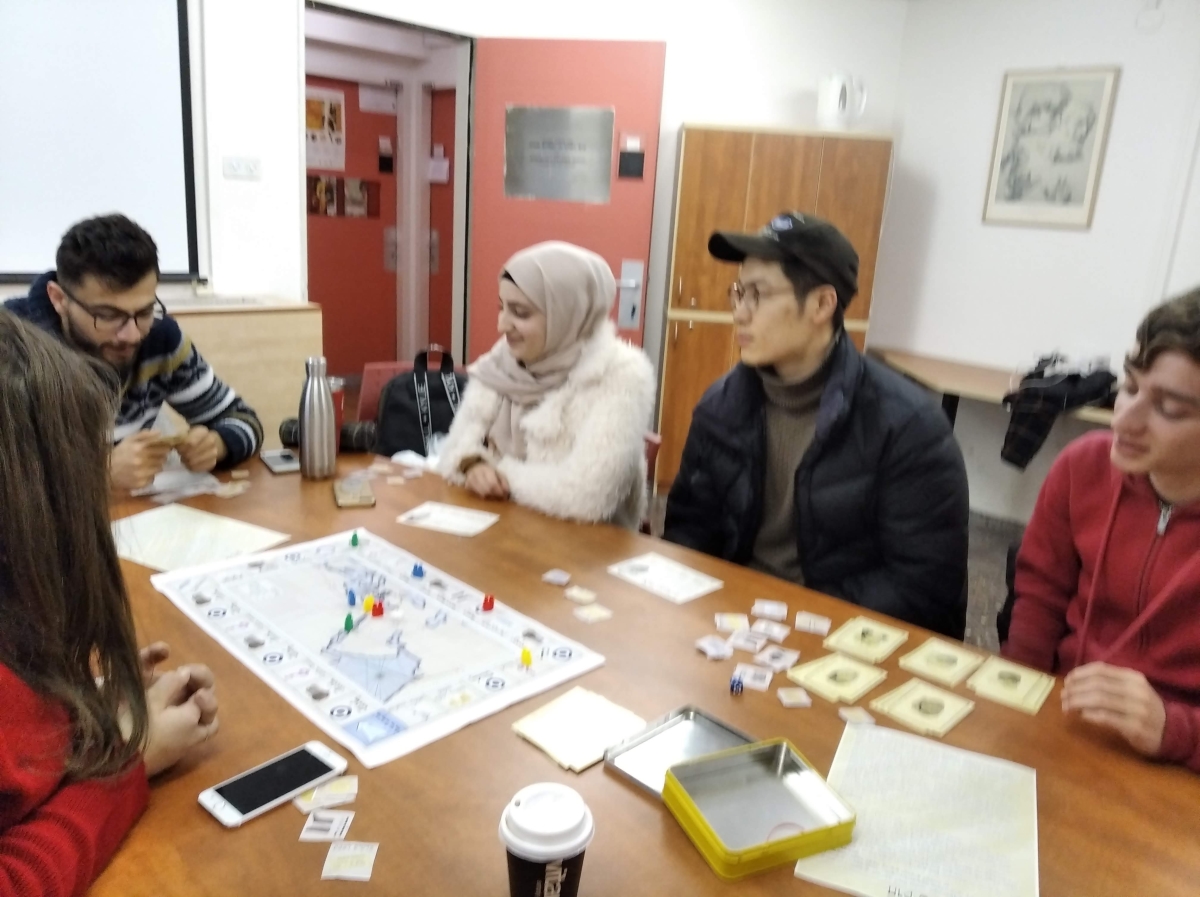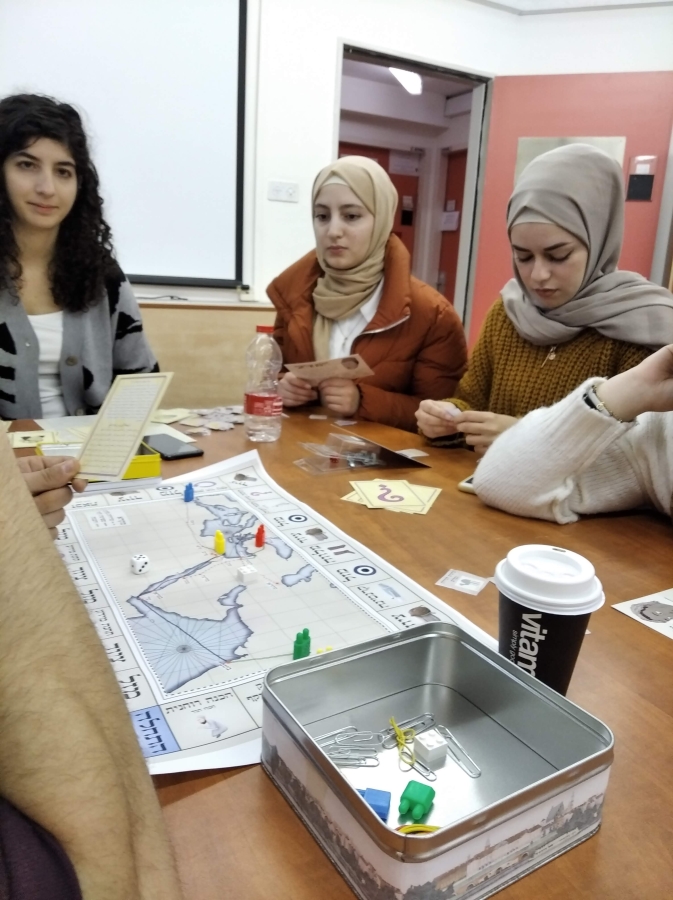How it came about
The MidEastMed team was awarded a small grant for innovative teaching from the Hebrew University, for a course on the history of medicine in the Middle East in the 2019/20 academic year that would focus on gamification; that is, the use of games or game-like elements in non-game situations. This is an educational approach aimed at increasing learners’ enjoyment and engagement, capturing their interest, and hopefully – inspiring them to continue learning. Gamification is different from game-based learning, in which students design their own games or use commercially-produced existing ones. The task of designing the educational games was a challenge that smaller teams from within the group spent much of the summer of 2019 overcoming, with the great assistance of Ori Kozma.
Advice from an expert
Before starting the project, we were able to receive advice from Prof. Shai Ginsburg of Duke University, who has many years of experience in researching games, as well as using them in teaching. He emphasized the importance of mapping and pre-planning: “failure is not an option,” and it is also vital to define precisely what the desired learning outcome is, since with games, it is much more difficult to change things mid-stream than it is in ordinary teaching.
A thought-provoking meeting made us ask ourselves question such as:
- How can we differentiation between one-time and multi-time games?
- What are the rules and requirements of the game and of the course?
- What is the hook that will catch the players attention and keep it?
- Will this work for everyone – what about gender differences? Cultural differences? Not everyone responds in the same way
- How can we divide roles so that the course is productive? We will need to identify who our students are and “cast” them appropriately
Shai’s final words of advice were to remember that students who take game-playing courses enjoy them, but don’t necessarily learn or remember more than students in conventional classrooms. This is probably because of the inbuilt conflict between games and teaching: games are meant be fun, learning - not necessarily. And as we designed game, we should keep in mind that learning purposes means that the result of the game cannot be entirely random.
The four games
After much discussion (not to say arguing), the gamification aspect of the planned course was boiled down into four:
- A simple introductory game, that would introduce students to the principles of gamification while teaching them some basic facts in the history of medicine. This ended up as a Quarto game, with sets of cards on the topics of illnesses, methods of prevention and treatment, medical discoverers, female medical pioneers, famous doctors, and vectors of disease. The team in charge of developing this comprised Ori, Maayan, Leigh, Dan and Benny.
- A more elaborate board game, that would teach students about the medical risks of fulfilling the Muslim religious requirement of the pilgrimage to Mecca—risks that influences colonial and imperial policy (see in detail below). The team in charge of developing this comprised Ori, Maayan, Leigh, Dan and Benny.
- A “model U.N.”-style game, based on the interwar sanitary commissions, in which the students would research and represent various countries and debate the issues. Would they come to the same conclusions as the real historical commissions? The team in charge of developing this comprised Ilan, Dan, Neta, Ahmad and Adam.
- Finally, an outdoor treasure hunt-style game, bridging the gap between medical history and local history (the second theme of the proposed course) by taking students along Jerusalem’s Ha-Nevi’im Street, the site of several hospitals and doctors’ residences in the late nineteenth and early twentieth centuries. The team in charge of developing this comprised Ilan, Dan, Neta, Ahmad and Adam, in collaboration with commercial developers BeeTravel.
Hajj and Cholera in detail
An important part of the regional history of medicine in the Middle East in the nineteenth century is the health-related aspects of the pilgrimage to Mecca (the hajj). The arrival of steamships and railways made the journey much faster than it had been in the past, and infectious diseases—whose carriers previously had died on the way, before spreading illnesses to pilgrim from other countries, or to those who had stayed at home—could now be transmitted from India to Egypt via Arabia. The chief of these diseases was cholera, and the fear of cholera brought into being a quarantine regime aimed at keeping it outside the various empires (colonial and otherwise) ruling the Middle East.

This board game asked each student to identify as a particular pilgrim, setting out from his or her home to Mecca. Each character had a backstory, a travel route and a certain amount of money to start with. Two pieces represented each character—one moved around the board according to the fall of the dice, as one might in Monopoly, buying the necessary provisions and travel tickets, and occasionally landing on action squares, where something good or bad might happen, either delaying progress or speeding it up. Once a character had obtained all it needed for the next stage in their travels, a second piece would move from one location to the next on its route, either by steamship, by rail or by camel. Next turn, acquiring provisions would start again, by moving the first piece around the board. The first person to complete the route to Mecca wins.


